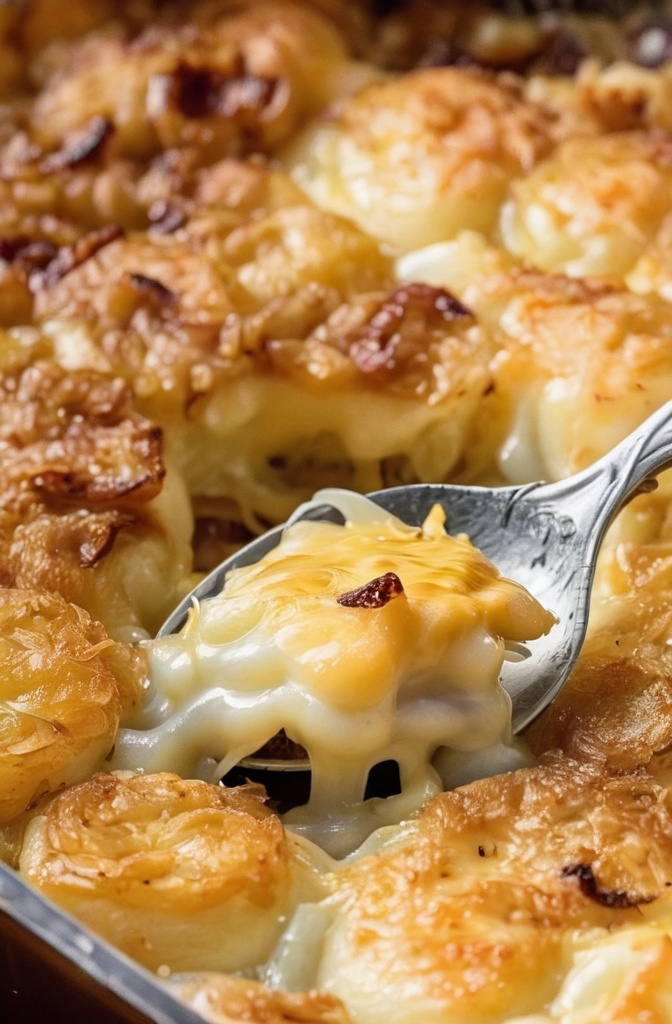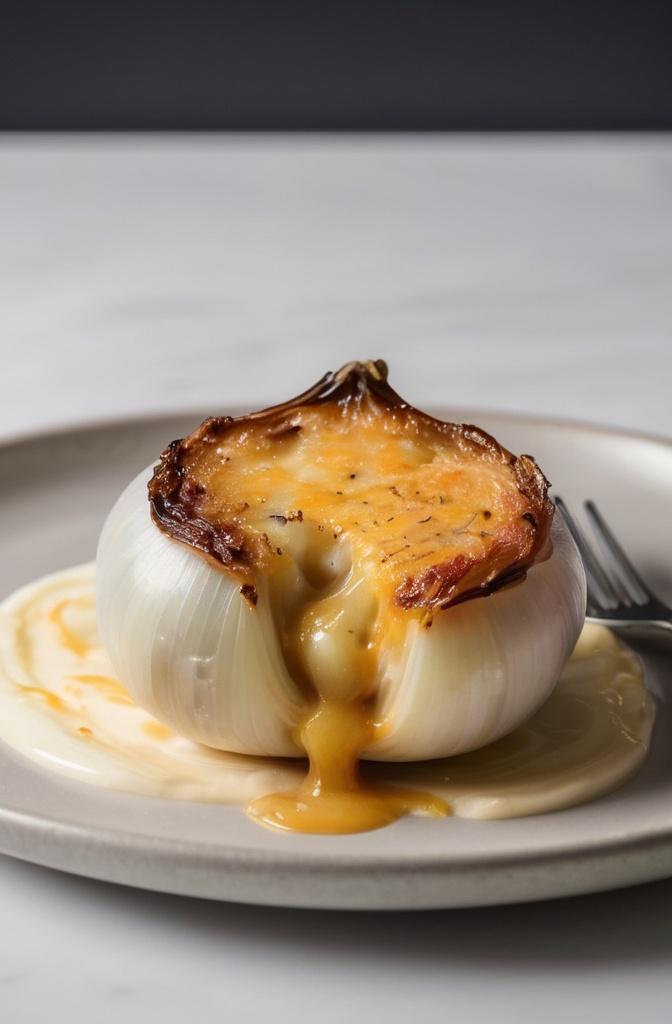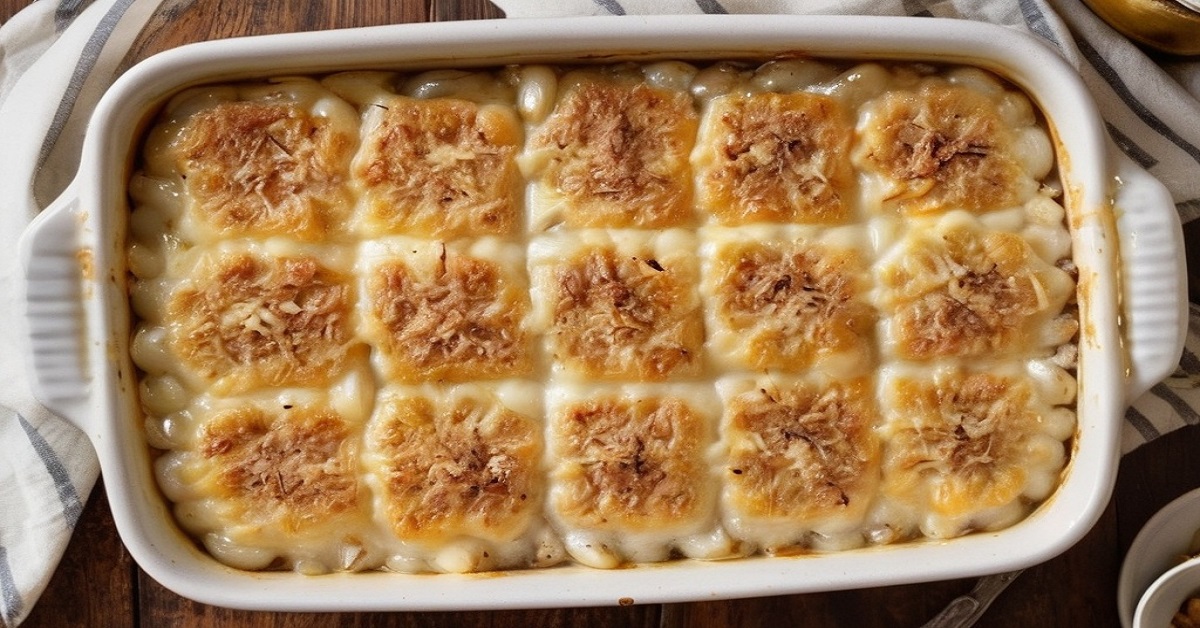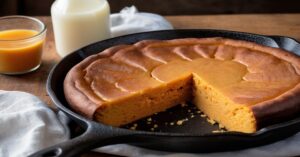Tennessee Onions Recipe ever sat down at a barbecue in the South and thought, What is that smell? Rich, melty, a little sweet, like comfort got baked into a dish? That, my friend, might’ve been Tennessee onions.
First time I had ‘em was out behind a church picnic in Jackson, and I’ll be honest I almost skipped ‘em thinking they were just plain baked onions. Then someone handed me a plate, and it was all over. One bite, and I knew I had to learn how to make it.
This ain’t your grandma’s creamed onions or some half-hearted casserole. Tennessee onions are all about simplicity turned sensational. Thick slices of sweet onions, smothered in a trio of cheeses, butter, and a hint of southern stubbornness.
Baked low and slow until everything melts together in a way that’s criminally good. What makes this recipe so special is its soul it’s humble but hits like a freight train of flavor.
Let’s break it down.
What Are Tennessee Onions?

Tennessee onions are a baked onion dish that originated in you guessed it Tennessee, though you’ll find versions across the South. The classic form involves thick-cut sweet onions, layered with butter and cheese, then baked until they’re soft and caramelized at the edges.
It’s rustic food. But done right, it’s just about perfect.
They’re often served as a side with barbecue, grilled meats, or holiday roasts. They’ve got this gooey, cheesy top and a tender, almost jammy texture underneath. The real magic, though, is in the contrast sharp cheddar tang meets mellow onion sweetness.
Ingredients & Substitutions
This recipe leans on just a few basic ingredients, but they gotta be right.
Sweet Onions – Vidalia is king here. They’re less pungent, with a natural sugar content that caramelizes beautifully in the oven. No Vidalias? Use Walla Walla or Maui onions, or even yellow onions in a pinch (but soak those in water first to mellow the bite).
Salted Butter – Adds richness and helps the onions brown. Unsalted works too just toss in a pinch more salt. Don’t use margarine. Just… don’t.
Cheddar Cheese – Sharp cheddar gives the dish its backbone. Pre-shredded is fine in a rush, but if you grate it fresh, it melts cleaner and packs more flavor. White or yellow your call.
Mozzarella For stretch. Not traditional, but more and more Southern cooks are throwing it in. It’s like giving your onions a cheese blanket.
Parmesan Adds depth and that nutty hit on top. Use the real stuff not the green can. Please.
Salt & Pepper Fresh cracked pepper does make a difference here. Kosher salt gives you better control.
Optional add-ons:
- Red pepper flakes if you want a little heat.
- Garlic powder for a hint of savory depth.
- Thyme or rosemary if you’re feelin’ fancy.
Dairy-Free? Use plant-based butter and swap cheese for dairy-free shreds like Violife or Miyoko’s. It won’t be quite the same, but it’ll hold its own.
Keto or Low-Carb? You’re in luck this dish is already low-carb. Just don’t serve it with bread.
Step-by-Step Instructions
This is one of those recipes where technique matters more than fuss. Here’s how to nail it.
1. Prep the onions.
Peel your sweet onions and slice into ½ inch thick rounds. Too thin and they’ll fall apart. Too thick and they won’t soften properly. Don’t separate the rings leave ’em whole like onion steaks.
2. Butter your dish.
Use a 9×13 baking dish and smear the bottom with butter. Real butter. Be generous. It prevents sticking and adds flavor.
3. Layer the onions.
Place the onion rounds flat in a single layer. It’s okay if they overlap a bit. Season with salt and pepper don’t be shy. Onions absorb seasoning like a sponge.
4. Add the butter.
Dot small cubes of butter across the tops of the onions. Don’t melt it beforehand. It’ll melt where it needs to.
5. Cheese it up.
Sprinkle the cheddar evenly. Then mozzarella. Finish with a fine dusting of Parmesan. This triple threat gives you melt, stretch, and depth.
6. Cover and bake.
Cover tightly with foil and bake at 375°F (190°C) for about 35–40 minutes. This is the steam-and-soften phase. You want those onions to go all tender and jammy underneath.
7. Uncover and finish.
Remove the foil and bake another 15–20 minutes, until the top is golden, bubbly, and borderline browned at the edges. That’s flavor.
Common Pitfalls:
- Don’t overcrowd the dish. If you pile onions too high, they’ll steam instead of bake.
- Don’t skip the foil. If you bake it uncovered from the start, the top will burn before the onions soften.
- Don’t use pre-sliced onions. You want thick, hearty cuts not thin slivers.
Want to mix it up?
Add crumbled bacon before baking for a smoky twist. Or a layer of crushed Ritz crackers on top for extra crunch. A spoonful of hot sauce stirred into the butter? Game-changer.
Cooking Techniques & Science
Why bake instead of sauté? Because slow baking transforms the sulfur compounds in onions into sugar-like molecules. That’s why they taste sweet instead of sharp. It’s Maillard reaction and caramelization dancing together in harmony.
The covered portion of baking lets the onions steam in their own juices. That’s why they get so tender. Once you uncover them, the cheese crisps up while the onions concentrate in flavor.
Using a ceramic or glass dish helps with even cooking. Metal pans can brown too fast and unevenly.
Grating your cheese fresh is worth the elbow grease. Pre-shredded cheese contains anti-caking agents that stop it from melting smoothly.
And butter? It carries flavor, yes but it also helps onions brown and keeps cheese from sticking. You ever try scraping baked cheese off an ungreased dish? You’ll wish you hadn’t.
Serving & Pairing Suggestions

Straight from the oven, this dish is molten gold. Let it sit 5 minutes to settle. Then serve it hot and bubbly.
Pair it with:
- Smoked brisket or pulled pork
- Grilled chicken thighs with dry rub
- Fried catfish and coleslaw
- Even a simple ribeye works great with it
Drink pairings? Try a crisp pilsner or a semi-dry white like Riesling. Sweetness in the wine echoes the caramelized onions.
Presentation-wise, a cast iron skillet does double duty cook and serve in the same pan for rustic charm. Sprinkle chopped parsley or chives on top for a little color pop if you’re feelin’ chef-y.
FAQs About Tennessee Onions Recipe
1. Can I make Tennessee onions ahead of time?
Yes. Assemble everything, cover tightly, and refrigerate up to 24 hours in advance. Bake just before serving.
2. How do I store leftovers?
Let cool, then refrigerate in an airtight container. They’ll keep for 3–4 days. Reheat in oven or microwave, though oven gives you the best texture.
3. Can I freeze it?
Not really recommended. Onions can get watery and cheese grainy after thawing. Better to eat it fresh or within a few days.
4. Can I use red onions?
Technically, yes. But red onions are sharper and not as sweet. If you use them, consider soaking them in cold water first to mellow them out.
5. What cheeses can I swap in?
Gruyère, provolone, fontina, or even pepper jack can all work. Avoid overly dry cheeses like feta or goat cheese they don’t melt well here.
Tennessee onions might be simple, but done right, they sing. It’s Southern comfort at its finest warm, rich, and just a little indulgent. And once you make ‘em, you’ll wonder why they haven’t been on your table all along.
Got any twists of your own for this recipe?
Final Thoughts: Why Tennessee Onions Are a Hidden Gem
Tennessee onions prove that Southern cooking doesn’t need to be complicated to be knockout good. The combo of buttery baked onions and melty cheese is almost too easy. But that’s what makes it genius.
This dish rides the line between side and star. You could toss it beside a slab of barbecue or just hand someone a spoon and call it lunch.
Pro tip? Make a double batch. They reheat like a dream, and they vanish fast.




